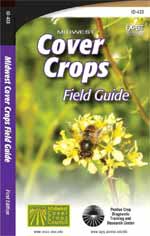Consider cover crops to improve soil for prevented planting situations
Persistent and heavy rains in Michigan this spring have delayed planting in many areas, causing some farmers to considering “prevented planting fields.”
This year’s rain has delayed planting in many areas around Michigan. In much of the state, the rain we have had this week (as of May 31, 2013) will not allow farmers to plant corn or soybeans until next week at the earliest. Obviously, there are many variables that will determine how early farmers can plant their fields.
This article is directed at those fields that you cannot plant in a timely fashion this season. Here are some cover crop options recommended by Michigan State University Extension that you may want to consider to improve your soil for “prevented planting” situations.
First and most important you must contact your FSA representative in your area. Ask him or her what the rules are for prevented planting and using cover crops.
If you are planning on using cover crops on these acres, do not delay purchasing your cover crop seed. Over the last few seasons, forage has been in limited supply and very high demand. Because of this, cover crop seed could be in short supply for the varieties that you would like to plant. It is very important to have your cover crop seed delivered as soon as possible.
Here are several ways that cover crops can prepare your soil for next year’s planting, according to a USDA-NRCS article “Cover Crops to Improve Soil in Prevented Planting Fields."
- Decrease and reduce soil runoff.
- Decrease and reduce wind erosion.
- Decrease weeds from germinating and growing in your field, which ultimately decreases weed seed production.
- Improve compacted areas in the field while holding soil aggregates together, which can improve the soil structure in your fields.

- Either increase nitrogen by using legumes, or sequester nitrogen with non-legume species.
If you are thinking about using cover crops on your prevented planting acres, you might want to consider using the cover crop selector tool that is available on the Midwest Cover Crop Counsel’s (MCCC) website. The MCCC has also published a Midwest Cover Crops Field Guide, available through Purdue University’s The Education Store or by calling 888-EXT-INFO. This field guide can be used to help you better understand the characteristics and management of many of the commonly used Midwest cover crop species.



 Print
Print Email
Email

